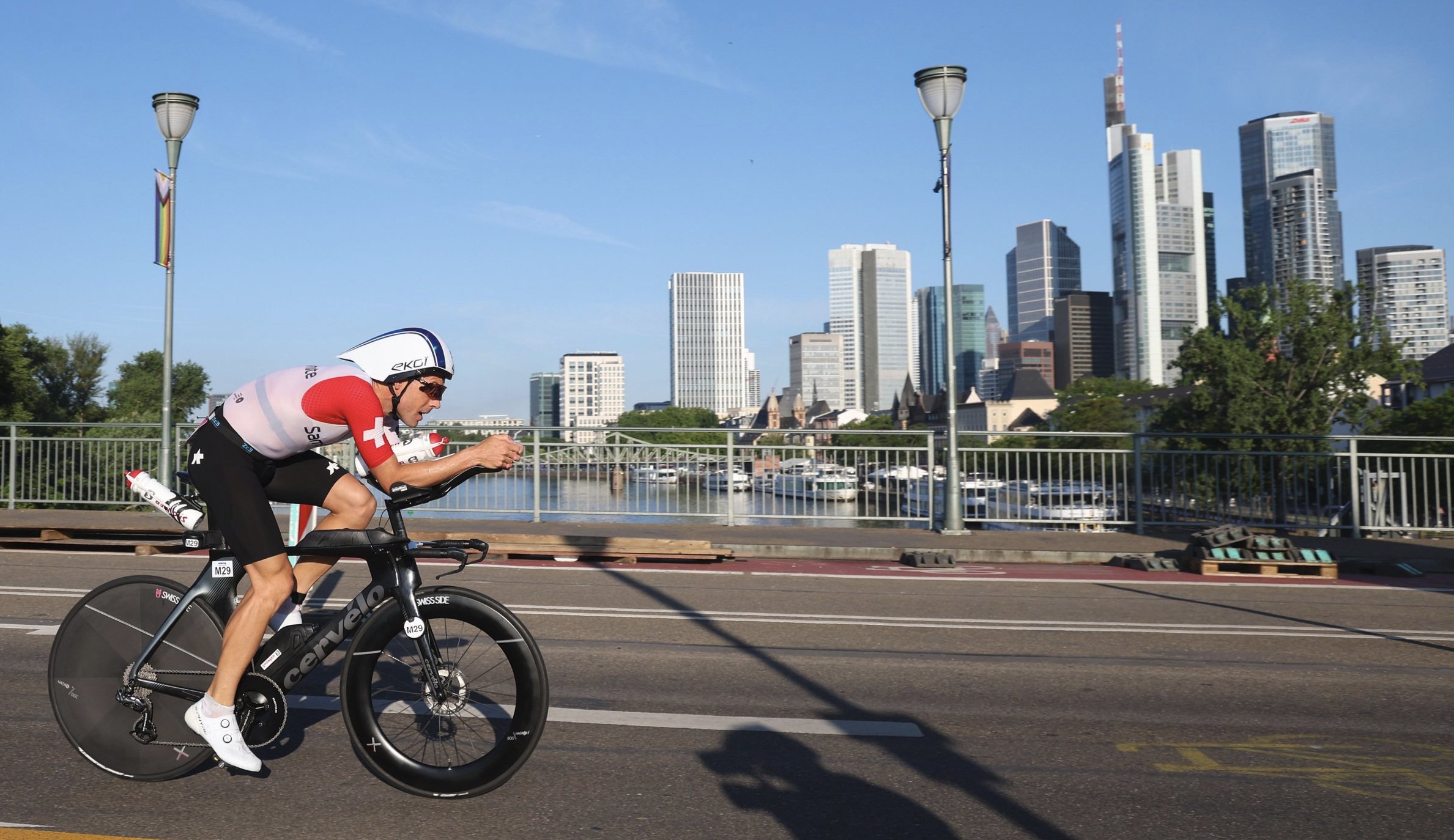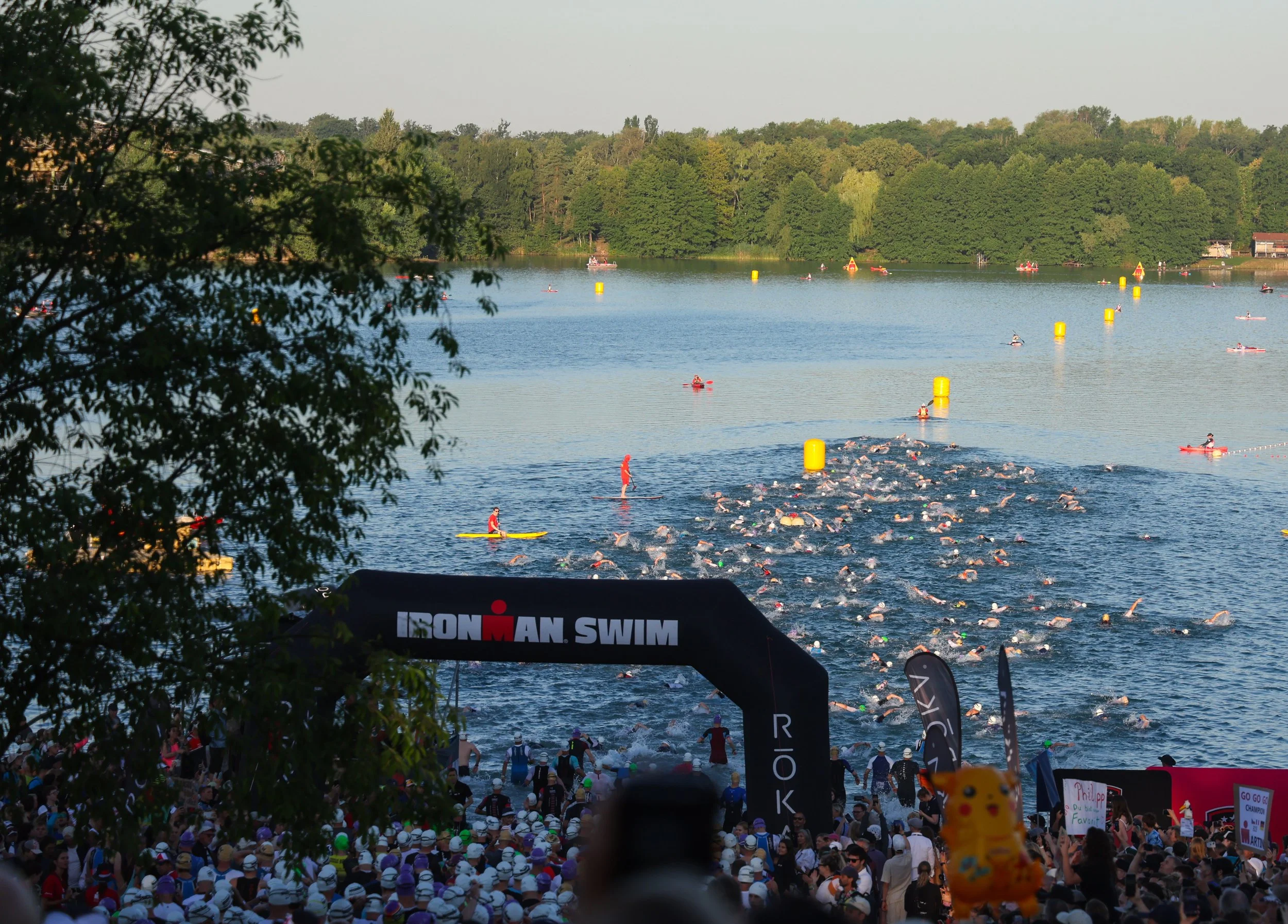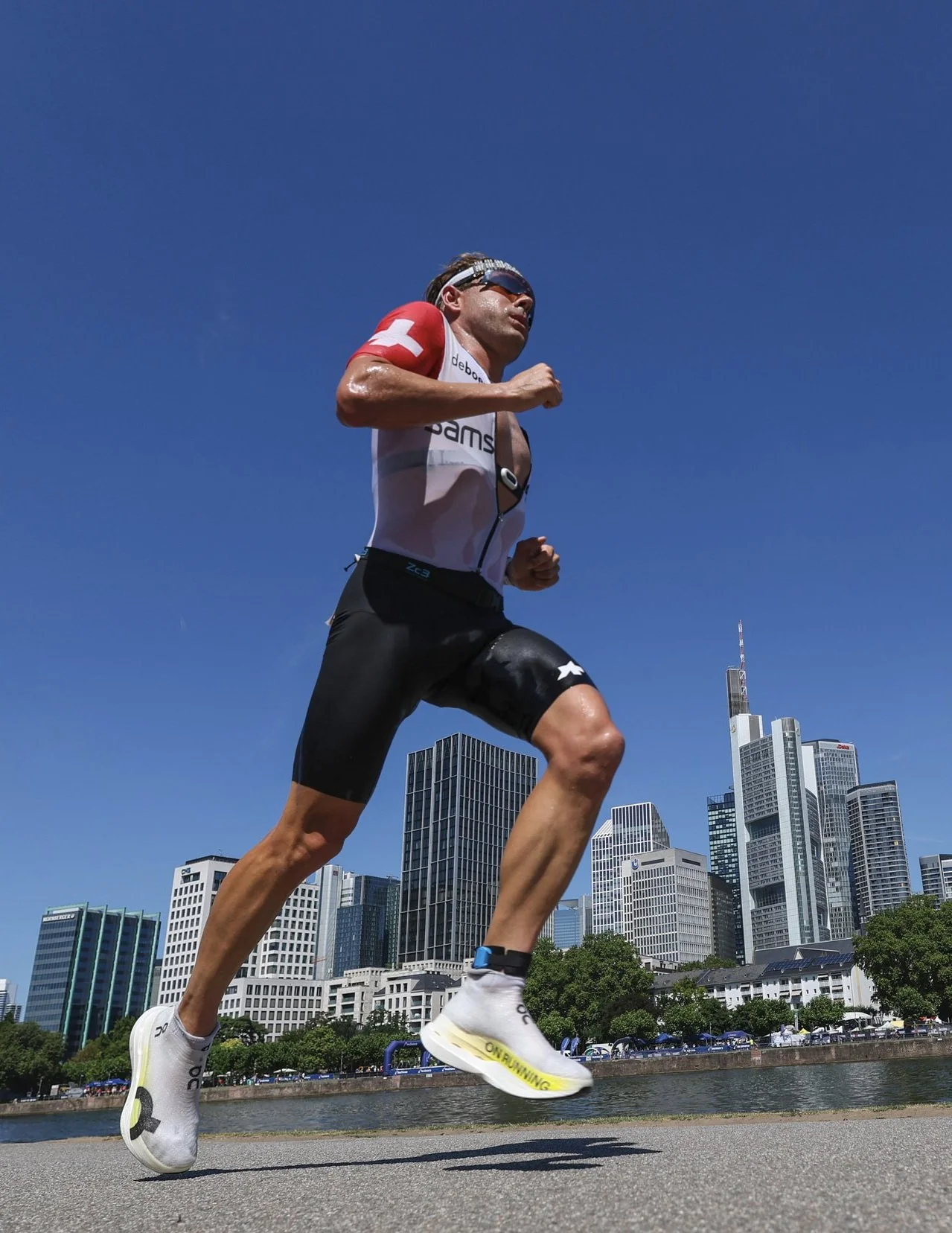
Ironman Frankfurt
European Championship Frankfurt
I was back racing in Frankfurt—my first Ironman here since the DNF in 2024 after eight months of illness. This race meant everything to me. I had to finish.
The start list was stacked. Some even called it a World Championship field. Well picked, Andrea 😉
Standing on the beach of the Waldsee, I felt confident about the swim but nervous about the bike. I knew I’d have to work hard to hang with such strong riders. My fitness still wasn’t fully back—triathlon rewards consistent training, and I’d been playing catch-up.
I had a fast start and reached the first buoy with the lead pack. The first 800 m were aggressive, and I pushed hard to stay in the feet. We seemed to be pulling away from the main group, which was perfect—I’d have some buffer on the bike before the heavy hitters caught up.
After about 3 km, the pace suddenly dropped. I kept bumping into the athlete in front—clear sign we were slowing. I didn’t want to give time back to the chasers, so I took the lead and pushed hard through the final stretch of the swim.
We exited with a solid gap to the second group. I felt good on the bike and pushed decent power, although my Garmin pedals weren’t working properly, which made pacing tough. My only goal was to stay with the lead group.
When the cobblestone section came up, I got nervous—not about the bottles, but the gears. I’m still riding Rudi Wild’s old bike—over 6 years old—and the gears sometimes drop and jam. And of course, mid-cobblestone, I changed gears and the chain dropped, getting stuck behind the chainring. For a moment, I lost it mentally—but I’d been here before. Slammed the brakes, jumped off, fixed the chain, and was back on the bike. I lost 10–15 seconds but pushed all-out and managed to bridge back. That moment felt like a small victory on its own.
I stayed with the group until km 150, then decided to ride my own pace. I was getting tired, and with a marathon ahead, I had to be smart. One year and two months back into training isn’t enough to race for a Top 10. My only goal was to finish strong and put the Texas DNF behind me. Qualification for Nice wasn’t even on my radar—just focus on heat, pain, and carbs.
The transition went smoothly, but my legs were already heavy. Four hours on the bike at 43.4 km/h with 1100 m elevation gain had taken its toll. I started the run at 4:00/km—not the 3:40 I trained for, but all I had. After 5 km, I asked myself how I was going to survive this. But I kept pushing. By 10 km, I found a rhythm—3:50/km—and felt surprisingly good. I started to believe.
At 20 km, everything changed. Muscles sore, stomach upset, heat rising. I couldn’t absorb carbs as usual and had to slow down my intake. I dropped back to 4:20/km pace, feeling every step. But I was just 40 seconds behind Slot #5 for Nice—that thought kept me going.
I knew Vogel was running around 4:30/km, and I was getting closer. A toilet stop cost me precious seconds, but relieved, I could run better again. Keeping 4:20/km became a fight—my muscles and stomach were both screaming. But the World Champs slot was worth it.
At 30 km, when everyone’s hurting, I overtook Vogel. It felt amazing, but I knew he might come back, so I kept the pace steady. Then, I saw Arnold—Slot #4—walking in pain. I passed him and tried to stay calm, knowing I was now in qualification position.
The final 5 km were brutal. My muscles were close to cramping, and I knew stopping might mean not restarting. I pushed through, refusing to let go of the slot I had fought so hard for.
At the finish line, the pain turned into joy. Cheering crowds, a kiss for my girlfriend, limping across the line with a smile and cramps. And there was my friend Patrick Lange, mid-interview, smiling at my cramping mess of a body.
After everything, I’m back. Nice, here we come.




